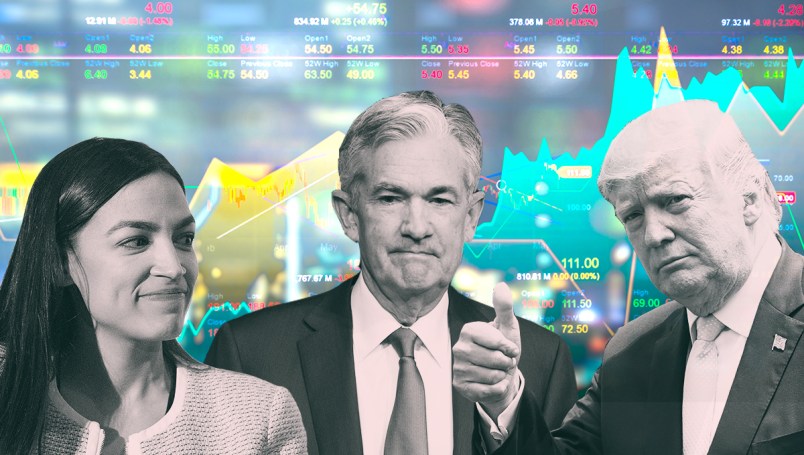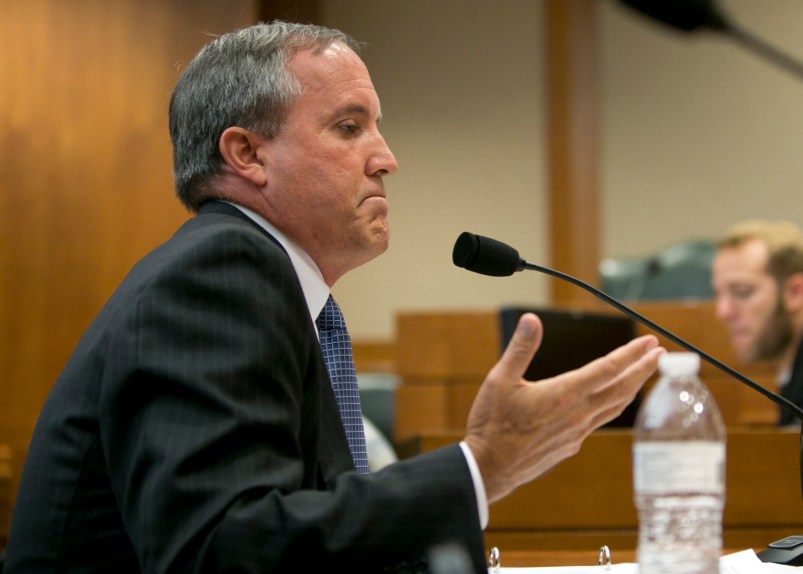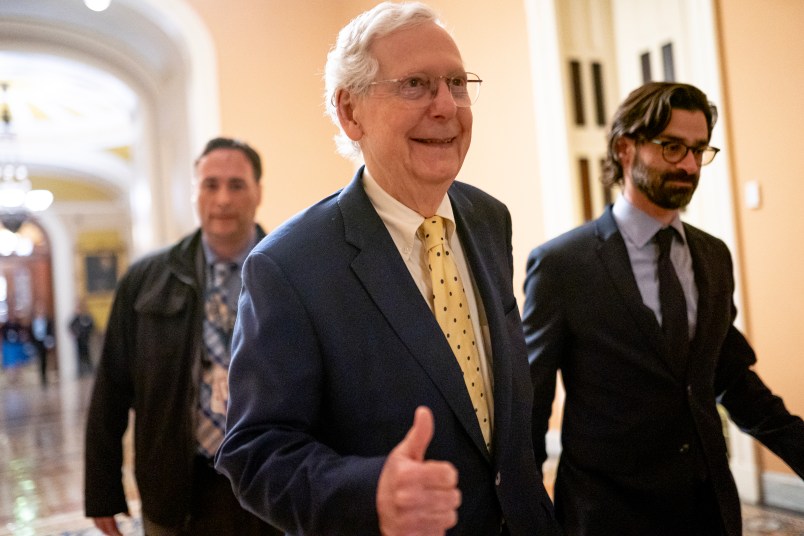This article is part of TPM Cafe, TPM’s home for opinion and news analysis.
We now know all too well that in the run-up to the Great Recession, policymakers failed to spot what was coming. Central banks around the world — including the Federal Reserve in the U.S., the Monetary Policy Committee in the UK and the European Central Bank in the Eurozone — missed the big one in their own countries but also failed to see that the crisis was global; one down, all down. In October 2008 members of the Federal Reserve’s Federal Open Market Committee predicted that real GDP growth in the U.S. in 2009 would be in the range -1.0% to +1.8%. We got -2.54%.
Miscalculations like this have real consequences. We now know that the U.S. went into recession in December 2007, as determined by the National Bureau of Economic Research’s Business Cycle Dating Committee, while almost every other advanced country did so in April 2008. My new book, “Not Working: Where Have all the Good Jobs Gone?” sets out in great detail how policymakers missed this catastrophe, even as it was upon them.
The Fed wrongly, in my judgment, raised rates nine times between 2015 and 2018 because of its mistaken belief that the U.S. was at full employment. During that time, other measures, especially weak wage growth, suggested that full employment was still a long way off. Trump sensed that and has rightly been pushing for rate cuts.
Two years after the 1929 Great Crash, economist John Maynard Keynes warned presciently that a financial crisis is especially hard to recover from and that growth would inevitably be slow. “It is a possibility that the duration of the slump may be much more prolonged than most people are expecting, and much will be changed both in our ideas and in our methods before we emerge,” he said. He was not talking, he said, about “the duration of the acute phase of the slump,” but about “the long, dragging conditions of semi-slump, or at least sub-normal prosperity, which may be expected to succeed the acute phase.”
Today, more than a decade after the Great Recession began, we are still mired in those “long, dragging conditions of semi-slump.” On the campaign trail, Donald Trump cleverly spotted that. Global recovery has been muted in the years after the 2008-2009 recession and people are hurting even after ten years of growth in what is now the longest U.S. recovery ever. Pain, anxiety, depression and a general sense of helplessness are all up. Happiness is down. Trump tapped into those feelings.
The rise of deaths of despair — from drug overdoses, liver failure from heavy drinking and suicide — in rural America and the urban heartland, especially among least-educated whites, was rapidly becoming a plague. Americans are increasingly in pain, not alleviated by the huge rise in opioid prescriptions. Life expectancy in the U.S. is falling.
The votes for Trump — and, as I show in “Not Working,” for Brexit also — were reflections of the insecurity, hopelessness and isolation that people were feeling, especially those who had been left behind in the recovery. Old coal and steel towns were suffering. People voted for Trump because they thought he could bring about change.
There was, of course, another force at play, too: History tells us that people suffering through a drawn-out recession tend to look around for who to blame. When people are hurting, it is easy to find scapegoats, and immigrants are often targets. In the 2016 presidential election, Donald Trump carried 26 of the 30 states in which the share of residents born abroad is the smallest, according to five-year (2011–15) estimates from the Census Bureau’s American Community Survey. Native-born residents account for 91 percent of the population in states Trump won versus 81 percent in states he lost. Trump ran on an anti-immigrant platform. Most U.S. voters view immigrants positively, but most Trump voters don’t. Residents of London, Paris and New York, which contain lots of immigrants, had more in common with each other than they did with the residents outside the big cities in their own countries.
Trump voters also tended to live in the areas that were struggling most. The good jobs had gone for many, and Trump placed himself as flyover America’s own belligerent champion. He saw the hurt that was occurring — and the discontent with the exam-taking classes, who were doing just fine, thank you, while many, especially the less skilled, were not.
Trump on the campaign trail repeatedly argued that despite claims from the Obama administration that full employment was approaching, the unemployment number “is totally fiction” and there were simply too few decent jobs available for those who wanted them. He was clearly on to something. By the election in November 2016, the unemployment rate was 4.7% but other labor market measures told another story. Employment as a proportion of the adult population then was 60%, versus 63% at the start of the recession in 2008. The underemployment rate, which measures how many hours workers would like to work, was also well above its starting levels. Trump had spotted that the U.S. labor market was nowhere close to full employment.
Between 2015 and 2018, largely based on the FOMC’s view that the U.S. labor market was close to full employment, the Fed, wrongly in my view, raised rates nine times; once in 2015 and 2016; three times in 2017 and four times in 2018. At the end of 2018 Fed was forecasting further rate rises to come in 2019 and 2020. In doing so, it relied on models that date from the 1970s, when the economy was quite different. Crucially, unions were far more powerful then than they are today. In 2019, these models are long out of date, but economists have continued to rely on them, and wonder why there is neither inflation nor the wage growth they expect to come with it.
As a result, Trump turned on the Fed and argued that rates were too high and that there should in fact be cuts. He even went after the chair of the Fed, Jay Powell, threatening to fire or even demote him. In my book I argue “the Fed had been signaling more rises to come; President Trump turned his ire toward them, and they changed their tune in 2019. I have to say I agree with him.” I still do.
During questioning by Rep. Alexandria Ocasio-Cortez (D-N.Y.) at the House Financial Services Committee yesterday, Powell essentially admitted that the Fed had wrongly raised rates because it thought the U.S. was close to full employment when it wasn’t.
“Do you think it is possible that the Fed’s estimates of the lowest sustainable estimates for the unemployment rate may have been too high?” Ocasio-Cortez asked Powell.
“Absolutely,” he replied.
“So, we overshot in what our long-term unemployment rate is?” she followed up.
“I think we have learned that it is lower, substantially lower than we thought,” the Fed chairman replied.
Ocasio Cortez went on to question Powell on the Phillips Curve, an economic model that supposes that low unemployment drives the rate of wage growth, and, with it, inflation. It is key to the Fed’s economic models. But that theory, she said, “is no longer describing what is happening in today’s economy.” Powell agreed.
The next day, National Economic Council director Larry Kudlow said “hats off to Ms. AOC” for her questions, saying she “kind of nailed that.” Trump and AOC agree on the need to cut rates and so do I. More policy errors by the elites.
“Not Working” shows that, now, wage growth is driven not by unemployment but by underemployment, which has still not returned to pre-recession levels. That explains the weak wage growth we see today, and why the U.S. is not yet at full employment.
Nonetheless, the markets suggest that investors expect three rate cuts by the Fed by the end of 2019 and probably even more in 2020 as the U.S. economy likely slows or even goes into recession. Trump was right, if perhaps for the wrong reasons — he is worried about the economy’s, and the Fed’s, influence on his reelection chances for 2020.
I disagree with Trump on many things, including the trade war. But on jobs, sub-normal prosperity and interest rates he has been vindicated.
David G. Blanchflower is the Bruce V. Rauner Professor of Economics at Dartmouth College, professor of economics at the University of Stirling, and a research associate at the National Bureau of Economic Research. He is the co-author of “The Wage Curve” and the author of “Not Working: Where Have all the Good Jobs Gone?” He lives in Canaan, New Hampshire. Follow him on Twitter: @D_Blanchflower.









